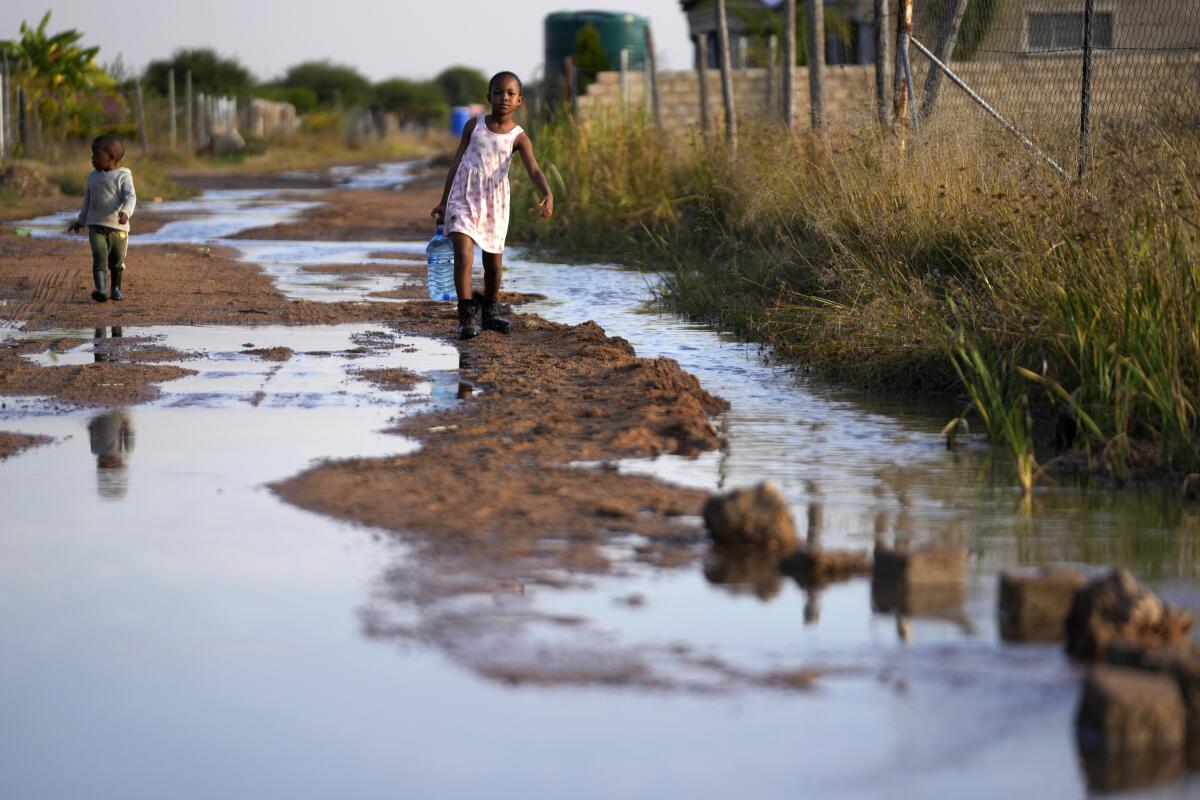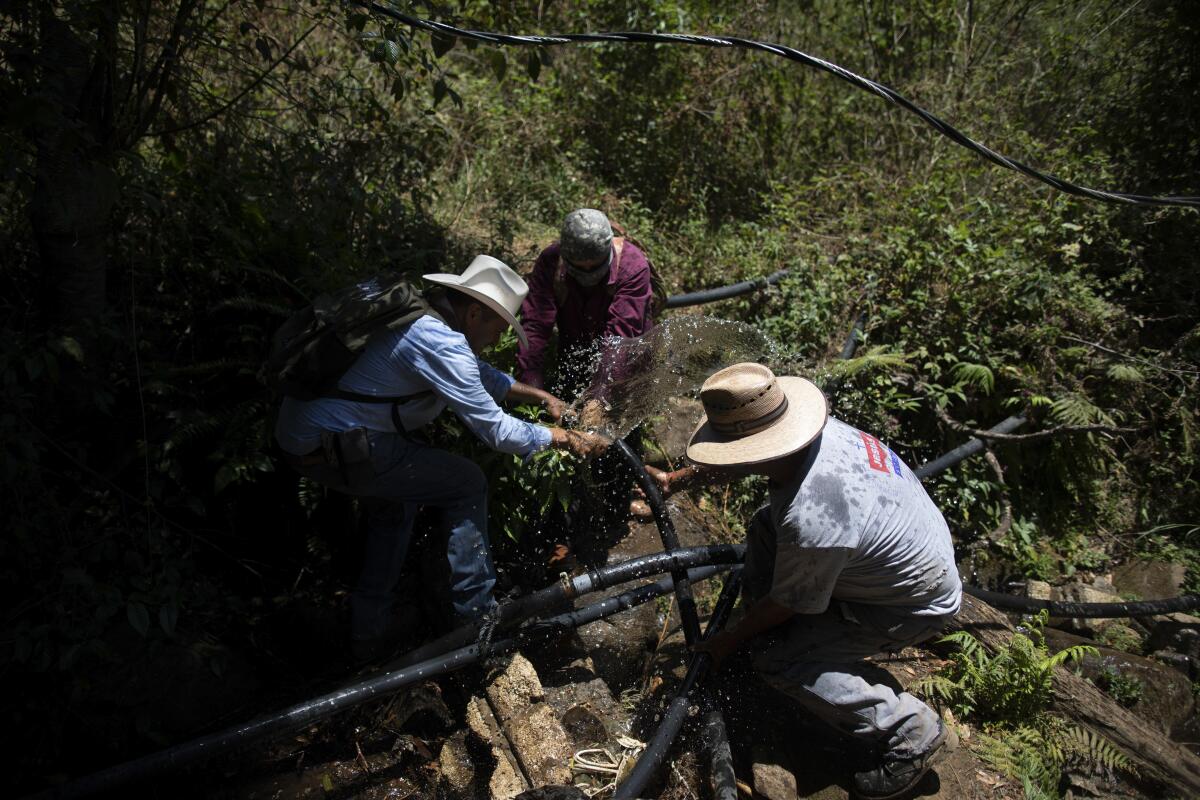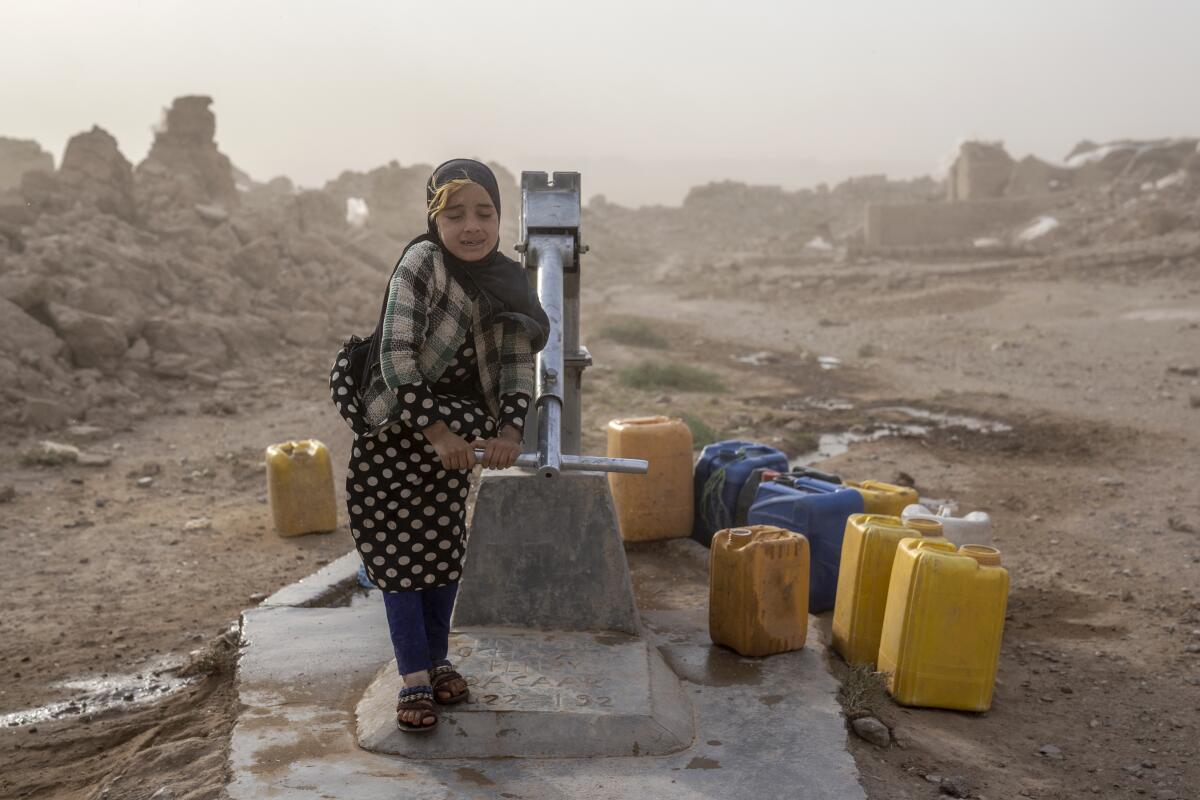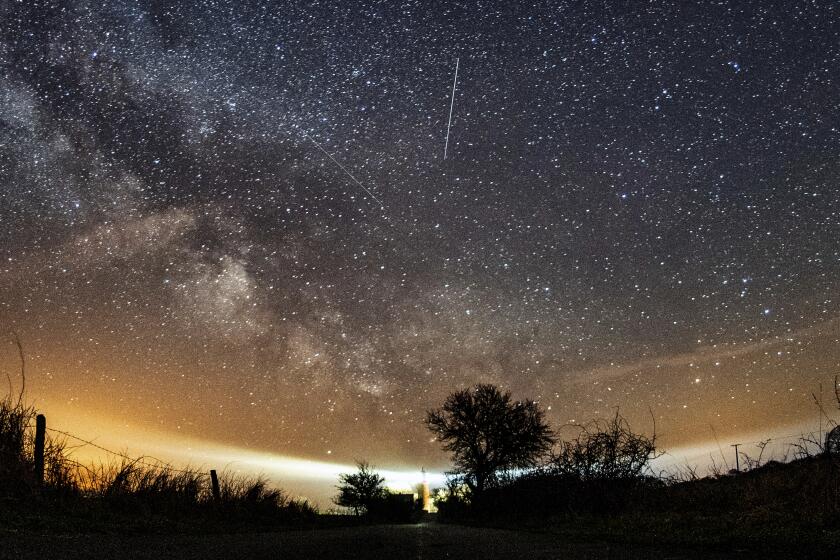Violence over water is on the rise globally. A record number of conflicts erupted in 2023

- Share via
Welcome to Boiling Point. I’m Ian James, a reporter on The Times’ climate team, writing the newsletter this week to fill in for my colleague Sammy Roth.
In Pakistan, two groups of farmers started arguing in the fields and attacked each other with axes, clubs and bricks in a bloody fight over water.
In South Africa, hundreds of people protesting a water shortage blocked roads with burning tires and hurled rocks at police.
In Ukraine, Russian attacks on infrastructure left a city of nearly 1 million people without water.
These are some of the 347 water-related conflicts that researchers have documented during 2023, a year that saw violence over water increase dramatically worldwide. The number of incidents reached a new record last year, far surpassing the 231 conflicts recorded in 2022 and continuing a rising trend that has persisted over the last decade.
The newly updated data compiled by researchers at the Pacific Institute, a global water think tank, show that water-related disputes — ranging from quarrels over water sources to protests over lack of clean water — have erupted into violence with alarming frequency, and that water systems have increasingly been targeted in conflicts.
“The rise is very dramatic and disturbing,” said Peter Gleick, Pacific Institute co-founder and senior fellow.
The upsurge in violence, he said, reflects continuing disputes over control and access to scarce water resources, growing pressures on supplies driven by population growth and climate change, and ongoing attacks on water infrastructure where war and violence are widespread, especially in the Middle East and Ukraine.
Details of last year’s incidents have been included in the latest update of the Pacific Institute’s Water Conflict Chronology, a comprehensive global database on water-related violence.
The researchers collect information about the incidents from news reports and other sources and accounts. They classify instances into three categories: where water or water systems have been a trigger of violence; have been used as a “weapon”; or have been targeted and become a “casualty” of violence.
Many regions of the world saw increases in the number of conflicts in 2023, including South Asia, Africa, the Middle East and Latin America and the Caribbean.
There were 131 instances of water-related violence last year in the Middle East, more than in any other region. The Israel-Hamas war pushed the number of incidents involving Israelis and Palestinians to 91, up from 45 events the previous year.
“Water is being used as a trigger and as a weapon and as a casualty, all three categories, in the Middle East,” Gleick said. “It’s partly a reflection on the scarcity of water in the region. It’s partly a reflection on disputes over control of land in the West Bank. And it’s partly a reflection of the massive destruction of Gaza after the Hamas attack in October, where infrastructure of all kinds has been targeted — civilian infrastructure, schools, hospitals, water systems, energy systems. It’s a reflection of the broad violence in the region.”
The incidents in late 2023 included a strike by Israeli military planes on a water supply tank in the Gaza Strip, which caused damage and killed several dozen people. Another airstrike in November destroyed part of the energy system that powered Gaza’s central wastewater treatment plant.
In various instances in the West Bank, Israeli troops demolished Palestinian-owned wells, water lines and homes. Israeli settlers destroyed water lines and tanks belonging to Palestinian farmers and pumped wastewater onto other farmers’ lands. And Palestinians clashed with Israeli forces during a military raid at their village spring.
In India, the number of violent incidents more than doubled to 25 last year. In one case, a long-standing dispute over water releases from a dam turned violent when hundreds of police from the state of Andhra Pradesh clashed with Telangana state police guarding the dam on the Krishna River. And in Haryana, farmers who were caught stealing water from a canal assaulted members of the local irrigation team.
In Mexico, the number of violent incidents rose to 18. In the city of Mérida, demonstrators marched to demand better water service and clashed with police. In Chiapas, violence erupted during a protest over allocation of water from a spring.

In Honduras, unidentified armed men shot and killed a water activist, and a few months later another environmentalist who had opposed a hydroelectric project was killed.
Analyzing the latest data, the researchers found large increases in violence in India and Latin America linked to drought and disputes over access to water. In sub-Saharan Africa, there were also more cases in which farmers, herders and others fought over access to water and land.
“The large increase in these events signals that too little is being done to ensure equitable access to safe and sufficient water,” said Morgan Shimabuku, a senior researcher with the Pacific Institute.
The rise in violence also underlines the devastation war can wreak on civilians and essential water infrastructure, she said, and exposes the increasing risk climate change adds in regions with fragile political situations.
The Oakland-based institute released the latest data ahead of World Water Week, the world’s largest international water conference in Sweden, where this year the event focuses on the theme of water cooperation for peace and security. Shimabuku and Gleick plan to present their findings in Stockholm.
Gleick has been tracking cases of water-related conflict for more than three decades. The database now lists more than 1,900 conflicts. Most of the cases have occurred since 2000.
Gleick said the purpose of cataloging the incidents is to raise awareness and encourage policymakers to work on strategies to reduce risks of violence over water resources.
“The expansion in the number of cases is worrisome, and it’s not being matched by an expansion in attention by our diplomats and by our policy community and by water managers,” Gleick said. “It is urgent that we work to reduce the threat of water-related violence.”

In many parts of the world, a key problem is the long-standing failure to provide people access to clean water and sanitation. (One new study estimates that 4.4 billion people worldwide don’t have access to safely managed drinking water services.)
“We have to provide safe water and sanitation to everyone. We have to have institutions and water utilities and managers who can meet basic human needs, which will reduce tensions over limited water resources,” Gleick said.
“Drought and water scarcity is a major factor in the violence that we’re seeing over water resources. And we know that climate change is going to continue to accelerate and that droughts are going to become increasingly severe and widespread,” Gleick said.
One of the few recent U.S. events in the database was a cyberattack last year by a group of Iran-affiliated hackers that targeted multiple U.S. water suppliers, including a Pennsylvania town’s water provider. Gleick said this cyberattack was included because it was successful and could have posed a health risk.
The war in Ukraine brought one of the deadliest examples of water intertwined with violence in recent years. Last year, an explosion ripped apart Kakhovka Dam in Ukraine, unleashing floods that killed hundreds of people and devastated the landscape along the Dnipro River. Ukraine has blamed Russia for the destruction of the dam.
Russian forces have also destroyed other dams and water infrastructure. During an earlier attack in January 2023, Russian attacks on energy and water systems left the city of Odesa temporarily without water.
Other conflicts, such as recent deadly clashes between Iranian and Afghan forces over water from the Helmand River, show the importance of strengthening international agreements over how water is shared along borders, Gleick said.
“There’s always going to be violence for political reasons or economic reasons or ideological reasons, but there is no reason why water should be a factor in that violence, and we have to take water out of the equation,” Gleick said. “There’s no single answer to this problem, but there are lots of answers to this problem, and we have to work on all of them.”
And that includes at home in the United States, he said.
In another recent report, researchers with the Pacific Institute and two other organizations examined how climate change is having worsening effects on water systems in rural communities across the United States. The researchers detailed how drought, flooding, wildfires and extreme temperatures pose growing threats that exacerbate existing water challenges, such as aging infrastructure and harmful contaminants.
The report warns that in California and the Southwest, more extreme droughts and deluges will compound the water challenges for Latino, Indigenous and low-income communities that have long struggled with inadequate infrastructure.
“The continued failure to provide safe water and sanitation in the United States is raising tensions in these communities,” Gleick said. “We saw it in Flint, Michigan. We saw it in Jackson, Mississippi. We see it in some of the Native American reservations in the Southwest that still don’t have access to safe water.”
Gleick detailed his vision for addressing the crisis of “water poverty” as one of the central themes in his book “The Three Ages of Water: Prehistoric Past, Imperiled Present, and a Hope for the Future.” He wrote that it’s a crisis with victims in every country, describing it as an “ongoing failure of institutions and governments.”
“It’s an outrage that one of the richest countries on the planet doesn’t provide safe water and sanitation to all of its citizens. It’s inexcusable,” he said.
He noted that the Biden administration has made progress by making billions of dollars available for water infrastructure through the Bipartisan Infrastructure Law, and state officials in California have also been directing funds toward solutions for communities where people live with contaminated water. “But more needs to be done — and needs to be done faster,” he said.
As for the rise in violence globally, Gleick said it’s “an alarm bell ringing.”
“It’s telling us that water problems need to be addressed more quickly and more aggressively,” he said.
This is the latest edition of Boiling Point, a newsletter about climate change and the environment in the American West. Sign up here to get it in your inbox. Or open the newsletter in your web browser here.
For more climate and environment news, follow @Sammy_Roth and @ByIanJames on X.
Toward a more sustainable California
Get Boiling Point, our newsletter exploring climate change, energy and the environment, and become part of the conversation — and the solution.
You may occasionally receive promotional content from the Los Angeles Times.




